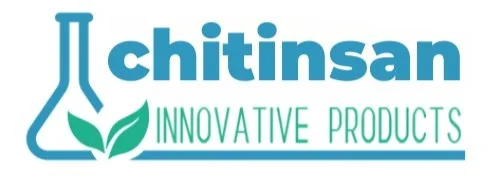CHITINOLOGY
A multifunctional natural resource for agriculture and environmental health.
WHAT IS CHITOSAN?
CHITOSAN is a specialized product obtained from processing a unique substance called CHITIN, which consists of glucosamine and acetic acid. Through advanced methods, chitosan plays a vital role in supporting biological viability. Chitin serves as the primary component of the cell walls in fungi and is a natural, edible resource. It forms the exoskeletons of various organisms, including arthropods, crustaceans (such as crabs, lobsters, and shrimp), insects, mollusks, and cephalopods. After cellulose, it’s the most abundant natural resource found.
Chitin’s main functions include:
Structural Support – Provides essential structural integrity.
Protection – Shields soft internal organs from damage.
Fluid Retention – Prevents fluid loss within organisms.
Chitosan is characterized by several advantageous biological properties, notably its biodegradability and biocompatibility. Among its most significant benefits is its status as an edible, eco-friendly resource, making it both versatile and sustainable.
Due to its distinctive molecular structure, chitosan is a highly versatile compound, making it an essential component across various industries. It is utilized in water treatment, pharmaceuticals, cosmetics, agriculture, medicine, paper manufacturing, textiles, microbiology, immunology, and biotechnology, with a particularly prominent role in the food industry.
CHITOSAN IN AGRICULTURE
Antimicrobial Activity
Chitosan's antimicrobial effect stems from its polycationic nature. The positive charge of its glucose monomers interacts electrostatically with the negatively charged cell membranes of microorganisms, damaging their cell wall polymers and compromising cell integrity. This leads to changes in osmotic pressure, causing vital intracellular organelles to exit the cell and preventing microorganisms from forming colonies and spreading diseases.
Specific Antimicrobial Properties
Antifungal: Effective against mold (Aflatoxin), yeast, and fungi.
Antibacterial: Active against both gram-positive (+) and gram-negative (-) bacteria.
Antiviral: Inhibits viral activity.
Insecticidal: Effective against pests.
Plant Protection
Chitosan provides a dual mechanism of defense:
Polymer Membrane Formation – Forms a protective membrane on the cell surface, blocking nutrient entry.
Cellular Disruption – Low molecular weight chitosan enters the cell, disrupting vital activities by absorbing electronegative substances, leading to the death of harmful organisms.
In addition, chitosan promotes plant health through:
Regenerative Effect – Enhances tissue regeneration and accelerates recovery from physical damage by promoting the formation of poly-electrode complexes and increasing growth factors.
Biostimulant Effect – Strengthens the plant immune system and reduces the impact of stress from environmental factors.
Food Industry Application
Chitosan acts as an edible film that extends the shelf life of food products due to its excellent barrier properties.
Environmental Benefits
As a chelating agent, chitosan selectively binds and removes heavy metals from soil and water, contributing to environmental cleanup efforts.

